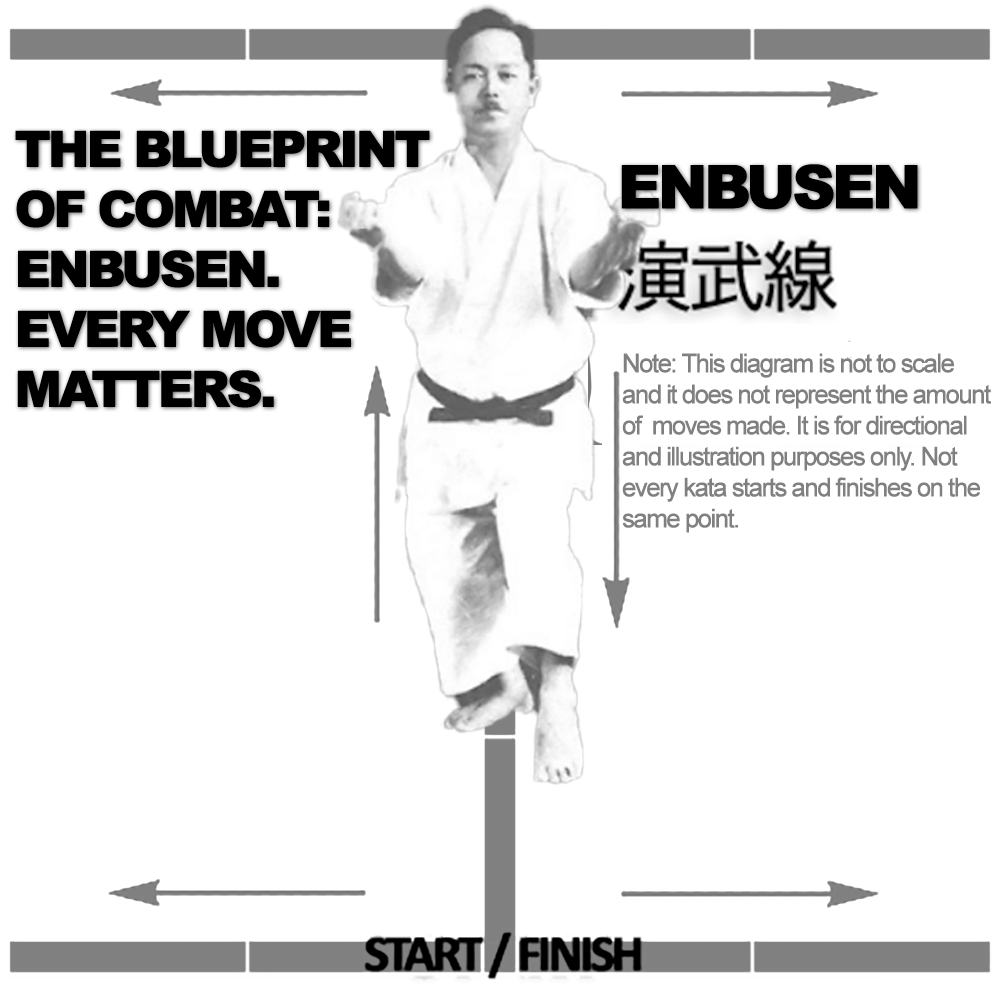
(Approx 2 minute 25 second read)
When people say “enbusen” (演武線), they immediately think of the performance line of a kata. But Enbusen is more than this.
.
Toshihiro Oshiro 9th dan Shima-Ha Shorin Ryu wrote; “Enbusen isn’t just about where you face when you perform kata. Enbusen is the opponent themselves. Enbusen represents the opponent’s attacks or movements, the practitioner must move accordingly to the movements of the opponent, and react to said attacks accordingly….. Enbusen is the opponent.” (End quote)
.
In 1938 Kenwa Mabuni wrote a book called ‘Karate-Do Nyumon’.
.
Karate-Do Nyumon is essentially a guide or introductory text that serves as an entry point for deeper understanding and practice of karate. In this book, Mabuni, one of the prominent figures in the development of karate, shares his insights on the principles, techniques, and philosophy.
.
Here is an extract from the book which informs us importantly about the directions you move in kata.
.
“The meaning of the directions in kata is not well understood, and frequently mistakes are made in the interpretation of kata movements. In extreme cases, it is sometimes heard that ‘this kata moves in 8 directions so it is designed for fighting 8 opponents’ or some such nonsense. I would like to specifically address this issue now.
.
Looking at the enbusen for Pinan Nidan, one can see that karate kata move in all directions, forward and back, left and right. When interpreting kata, one must not get too caught up in these directions. For example, do not fall into the trap of thinking that just because a kata begins to the left that the opponent is always attacking from the left. There are two ways of looking at this:
.
1: – The kata is defending against an attack from the left.
.
2: – Angle to the left against a frontal attack.
.
At first glance, both of these look alright. However, looking at only number 1:, the meaning of the kata becomes narrow, and the kata, which in reality must be applied freely in any situation, becomes awfully meagre in its application.
.
Looking at an actual example, the five Pinan kata all start to the left, and then repeat the same series of techniques to the right.
.
Looking at interpretation 1:, the opponent must always attack from the left, and while fighting that opponent, another opponent comes from behind so the defender turns to fight that opponent. This type of interpretation is highly unreasonable.
.
Looking at interpretation number 2: however, the five Pinan kata show us that against an attack from the front we can evade either left or right to put ourselves in the most advantageous position to defend ourselves.” (End)
.
This is important historical information, as Mabuni clearly informs us that the initial movements recorded in kata are designed to position us advantageously, rather than simply ‘blocking’ an attack from the left or right.
.
Moving off the opponent’s line of attack while keeping them on yours is a key principle embedded within the practice of kata.
.
When training alone, we simulate these crucial angles and movements through the pattern we trace on the floor.
.
Remember, kata and its ‘enbusen’ are more than a routine – they’re your blueprint, reminding you that each movement is a response to a potential threat, with every step teaching another lesson.
.
The patterns of kata are relatively straightforward to memorize, and walking through your kata may seem easy… But doing it right, not so much.
.
.
Toshihiro Oshiro quote from an interview with American Samurai Vol 7, July 2002
.
.
Written by AC.
